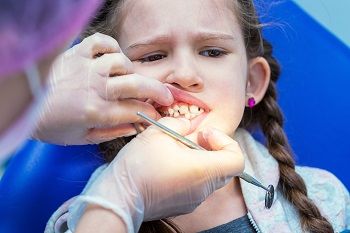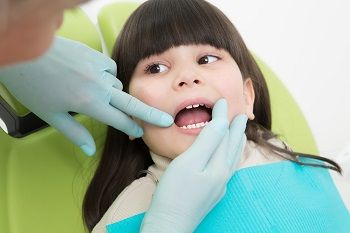The Benefits of Early Orthodontic Treatment for Children
This blog will delve into the benefits of early orthodontic treatment for children. We will explore the concept of early orthodontic treatment, define common orthodontic issues that children may face, and highlight the advantages of starting orthodontic treatment at a young age. Parents should understand the potential long-term benefits of making informed decisions about their child's dental health.
What is Early Orthodontic Treatment?
Early orthodontic treatment, also known as interceptive orthodontics, refers to orthodontic intervention for children at a young age, typically between the ages of 7 and 11. It involves addressing and correcting dental and jaw alignment issues before they become more severe or difficult to treat.
During this early phase of treatment, orthodontists can assess the child's dental development and identify any potential problems that may require intervention. By intervening early, orthodontists can guide the growth and positioning of the teeth and jaws, allowing for more effective and efficient treatment outcomes.
The primary goal of early orthodontic treatment is to address specific orthodontic issues while the child's jaw is still growing and developing. This phase typically focuses on guiding the growth of the jaws, creating space for permanent teeth, correcting bite alignment, and addressing issues related to tooth crowding or misalignment.
Common Orthodontic Issues in Children
Children can experience various orthodontic issues that may require early intervention. Here are some of the common orthodontic problems seen in children:
- Crowded Teeth: Crowding occurs when the mouth has insufficient space for all the permanent teeth to emerge properly. This can lead to overlapping or misaligned teeth, impacting the bite and oral health.
- Misaligned Jaws: When the upper and lower jaws do not fit together properly, jaw misalignment can occur. This can result in an overbite (upper teeth protruding over the lower teeth), an underbite (lower teeth protruding over the upper teeth), or a crossbite (upper and lower teeth don't align correctly).
- Open Bite: An open bite occurs when the upper and lower front teeth do not meet when the mouth is closed. This can affect speech, chewing, and proper alignment of the jaw.
- Overlapping or Protruding Teeth: Some children may have teeth that protrude or stick out, either due to genetic factors, thumb sucking, or other habits. Protruding teeth are more susceptible to injury and can affect the smile's appearance.

- Impacted Teeth: Impacted teeth fail to erupt properly through the gums. This commonly occurs with wisdom teeth but can also affect other permanent teeth. If left untreated, impacted teeth can cause pain and discomfort and lead to complications.
- Crossbite: A crossbite occurs when one or more of the upper teeth sit on the inside of the lower teeth while closing the jaws. This misalignment can lead to jaw asymmetry, difficulty biting or chewing, and uneven teeth wear.
- Thumb Sucking or Tongue Thrusting Habits: Prolonged thumb sucking or tongue thrusting can affect the alignment of teeth and the growth of the jaws, leading to orthodontic issues.
Early orthodontic treatment aims to address these common orthodontic issues at a young age when the jaw is still developing. By intervening early, orthodontists can guide the growth of the jaws, create space for permanent teeth, correct bite alignment, and prevent more complex problems from developing later in life.
Benefits of Early Orthodontic Treatment
Early orthodontic treatment offers a range of benefits for children. Parents and orthodontists can work together to improve dental health, facial development, bite alignment, speech, and self-esteem by addressing orthodontic issues at a young age. Here are the key benefits of early orthodontic treatment:
- Improved Dental Health: Early intervention can prevent dental problems associated with misaligned teeth or jaws. Straightening teeth allows for easier oral hygiene. Moreover, it reduces the risk of tooth decay, gum disease, and other dental issues.
- Enhanced Facial and Jaw Development: Early orthodontic treatment can guide the proper growth and development of the jaws, leading to improved facial aesthetics and symmetry. It can help correct skeletal imbalances and prevent future problems with jaw alignment.
- Better Bite Alignment: Addressing bite issues, such as overbite, underbite, crossbite, or open bite, at an early stage can improve overall oral function. Proper bite alignment ensures efficient chewing, reduces stress on the jaw joints, and minimizes the risk of teeth grinding or clenching.
- Improved Speech and Pronunciation: Some orthodontic issues can impact speech and pronunciation. Early orthodontic treatment can correct these issues, allowing children to articulate sounds and words more accurately.
- Increased Confidence and Self-esteem: Straighter teeth and a well-aligned smile can boost a child's self-confidence and self-esteem. By addressing orthodontic concerns early, children can experience improved social interactions and feel more comfortable with their appearance.
- Early Intervention for Complex Cases: Early orthodontic treatment allows orthodontists to address complex orthodontic cases more effectively. Identifying and addressing issues early on may reduce the need for more extensive and invasive treatments in the future.
- Optimal Use of Growth Potential: Children's jaws are still developing, making them more receptive to orthodontic intervention. Utilizing this growth potential allows for more efficient and effective treatment outcomes.
- Shorter Treatment Duration: Early orthodontic treatment may result in faster treatment duration than waiting until adolescence or adulthood. Starting treatment early can help address orthodontic issues before they worsen, potentially reducing the need for prolonged orthodontic care later.
- Financial Savings: Addressing orthodontic issues early can potentially reduce the need for more costly and extensive treatments in the future. Early intervention may help prevent complications requiring oral surgery or other interventions.

Orthodontic Treatment Options for Children
Regarding orthodontic treatment options for children, several approaches are available to address their specific dental needs. Here are some standard orthodontic treatment options for children:
- Traditional Braces: Traditional braces consist of metal brackets and wires attached to the teeth. These braces apply gentle pressure to gradually shift the teeth into the desired positions. They are highly effective in correcting various orthodontic issues and are suitable for children of all ages.
- Ceramic Braces: Ceramic braces work similarly to traditional braces but use tooth-colored or clear brackets and wires, making them less noticeable. They offer an aesthetic alternative for children concerned about the appearance of metal braces.
- Clear Aligners: Clear aligners, such as those offered by Invisalign® Teen, are famous for older children and teenagers. They are custom-made, transparent aligners that fit over the teeth and gradually move them into alignment. Clear aligners are removable, allowing children to quickly eat, brush, and floss.
- Lingual Braces: Lingual braces are placed on the backside (lingual) of the teeth, making them virtually invisible from the front. They are an option for children who desire a more discreet treatment approach.
- Functional Appliances: Functional appliances are removable or fixed devices used to correct bite discrepancies and promote jaw growth in children. Examples include headgear, Herbst appliances, or palate expanders. These appliances are typically used in combination with braces to achieve optimal results.
- Retainers: Retainers are used after active orthodontic treatment to maintain the achieved results. They help stabilize the teeth in their new positions and prevent them from shifting.
The choice of orthodontic treatment option for children depends on various factors, including the nature of their orthodontic issues, age, personal preferences, and the orthodontist's recommendations. Orthodontists carefully assess the child's dental condition and discuss the most suitable treatment options with parents to ensure the best outcomes.
It's important to note that orthodontic treatment is highly personalized, and the specific treatment plan may vary for each child. Consulting with an experienced orthodontist will provide valuable insights and help determine the most appropriate treatment option for your child's needs.
Contact your Danville dentist, Dr. Hoss Abar, DDS, MSD, at Danville Orthodontics to learn more about the Benefits of Early Orthodontic Treatment for Children.
Resource:
What is Orthodontics, and Why Is It Important?
This media/content or any other on this website does not prescribe, recommend, or prevent any treatment or procedure. Therefore, we highly recommend that you get the advice of a qualified dentist or other medical practitioners regarding your specific dental condition.
